
6 Squat Variations for Bigger, Stronger Legs
There's no such thing as a good excuse not to squat. Yeah, we said it. Bad knees, an achy lower back, a lack of equipment-these excuses for not squatting won't cut it, especially when you consider all the variations that exist for the “king of exercises.”
You don't want to put a barbell on your back and squat with it? Fine. You don't have to. But you must do some version of the movement to build lower-body strength and size, optimize core stabilization and function, maintain adequate range of motion in the hips, knees, and ankles, and ensure a respectable level of overall fitness and health.
Squat down until your thighs reach at least parallel with the floor, then properly use the biggest muscles in your body to stand back up. Repeat this many times over, and you're officially squatting, just as nature intended. How you choose to load the movement is up to you. On the following pages, you'll find six great squat variations, plus a sample leg-training routine showing you how to incorporate them. Start with one or more of these, and leave the excuses behind.
1 of 6
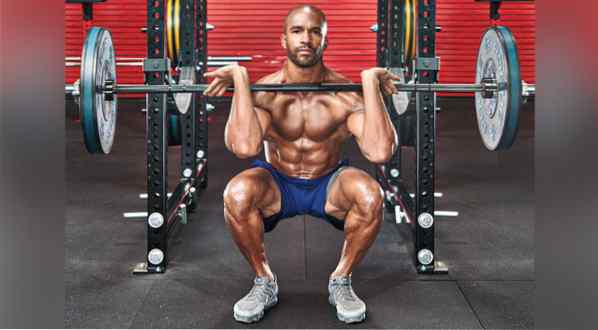
Per Bernal
Front Squat
DEFINING DIFFERENCE:
Compared with back squats, front squats: a) put more emphasis on the quads versus the glutes, and b) force the lifter's torso to remain more upright during the set. This makes the front squat a great alternative for anyone with lagging quads and/or lower-back issues.
EXECUTION:
Stand inside a power rack and assume a front rack position, with the bar resting across your delts, on your fingertips, and your elbows pointing up and forward. With your chest up, back flat, and core engaged, bend your knees and hips as if sitting down onto a chair until your quads are parallel with the floor. Keep your back tight so you don't round forward. For the positive portion of the lift, explosively drive up through your heels to stand back up with the weight, keeping your torso upright throughout.
WHEN TO DO IT:
Perform this exercise as your first squat movement in a leg workout. (Alternate with safety bar squat.)
2 of 6
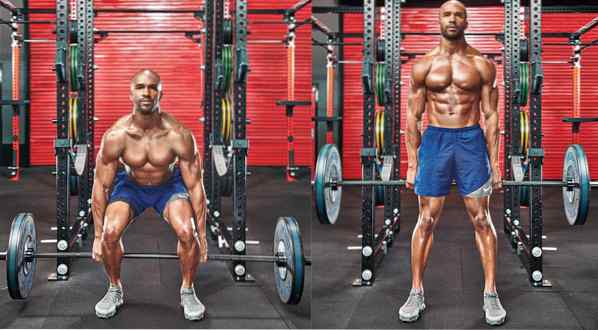
Per Bernal
Barbell Hack Squat
DEFINING DIFFERENCE:
With the bar behind your legs, staying back on your heels as you explode up is fairly easy. Some may see this move as a deadlifting alternative, and rightfully so, but there's a reason it has “squat” in its name-because, when done correctly, the quads take on a majority of the load. That's not the case with the deadlift, which hits more of the hamstrings, glutes, and lower back.
EXECUTION:
Stand with a shoulder-width stance in front of a barbell sitting on the floor. Bend your knees and hips to lower down, and grasp the bar with a shoulder-width grip. With your back flat (not rounded) throughout, forcefully extend your hips and knees to stand up with the bar, pulling it up the backs of your legs. Finish in a standing position with your shoulders back and chest out, then reverse the motion under control to lower the bar back to the floor.
WHEN TO DO IT:
Do this as the second squat movement in a leg workout. Don't go too heavy with these. It's a technically awkward move.
3 of 6
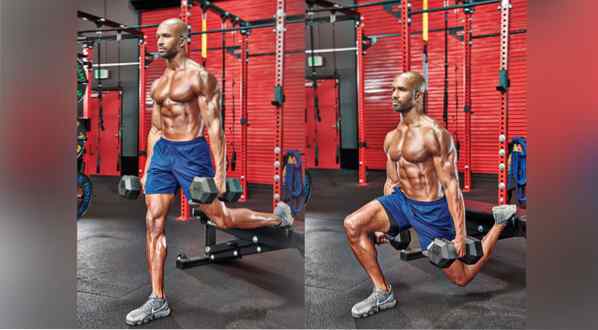
Per Bernal / M+F Magazine
Bulgarian Split Squat
DEFINING DIFFERENCE:
Bulgarians are a great squatting alternative for enhancing functional strength as well as hip mobility; the back hip flexor gets a stretch it never experiences with a standard nonstaggered squatting stance.
EXECUTION:
Holding a pair of dumbbells at your sides, place one foot on a stable box or bench behind you with that knee bent and the other foot flat on the floor in front of you. The front foot should be far enough forward so that when you lower down, your knee doesn't extend over your toes. Bend your front knee to lower yourself straight down toward the floor. When your front quad reaches parallel, press up through the heel to the start position. Complete all reps, then switch legs.
WHEN TO DO IT:
Because the Bulgarian split squat is a difficult move, it's best to do it when your legs are fresh. So hit them early in the workout, even though you'll likely be using relatively light weight.
4 of 6
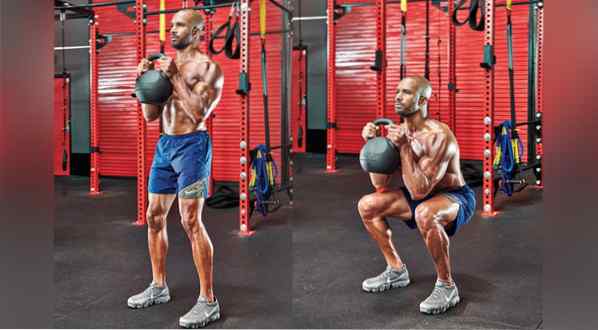
Per Bernal
Goblet Squat
DEFINING DIFFERENCE:
Goblets are a toned-down version of a front squat, using a kettlebell or dumbbell instead of a barbell. As such, you'll use light weight (albeit higher reps), while giving your wrists a break. Aside from these obvious differences, you'll still place greater emphasis on the quads (versus the glutes) and have an easier time staying upright.
EXECUTION:
Hold a kettlebell or dumbbell with your hands just below your chin, elbows in at your sides, gripping each side of the kettlebell handle or the top end of the dumbbell. Begin with your feet shoulder-width apart and core engaged. Bend at the knees and drop your torso and butt straight down as deep as you can (past parallel with the floor, ideally) while keeping your heels in contact with the floor. Reverse the motion by extending your hips and knees and driving up through your heels, keeping your back flat and core tight throughout.
WHEN TO DO IT:
Perform goblet squats in place of front squats early in a workout if you're going heavy (more than 50 pounds) or at the end if you're going light with high reps. These make for one hell of a leg-day finisher.
5 of 6
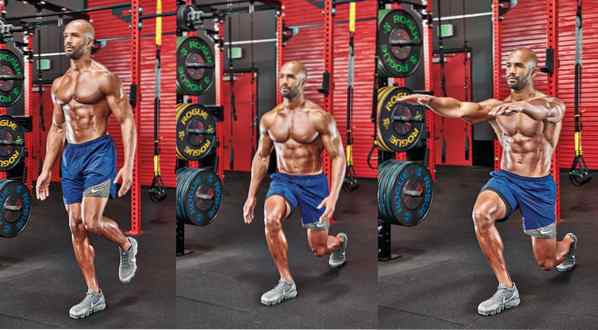
Per Bernal
Skater Squat
DEFINING DIFFERENCE:
The skater squat is decidedly more approachable (easier) than the pistol squat, yet you still reap all the great benefits. It promotes strength and muscular balance from leg to leg, because it's a unilateral move. You can do the exercise anywhere, at home or on the road, because it requires no equipment. And it puts less strain on the lower back, because you don't need a barbell on your shoulders to create overload. (The fact that all your body weight is supported by one leg takes care of that.)
EXECUTION:
From a standing position, lift one foot off the floor. Perform a squat on the down leg, letting the non-working leg move behind you and past the midline of your body (like a speed skater) to counterbalance your weight. When your working thigh reaches parallel with the floor (or close to it) and your back foot is on the floor, reverse the motion to stand back up. Complete all reps with that leg, then switch legs and repeat.
WHEN TO DO IT:
Late in a leg workout as a finisher or at home or when traveling if the only equipment you have is yourself.
6 of 6
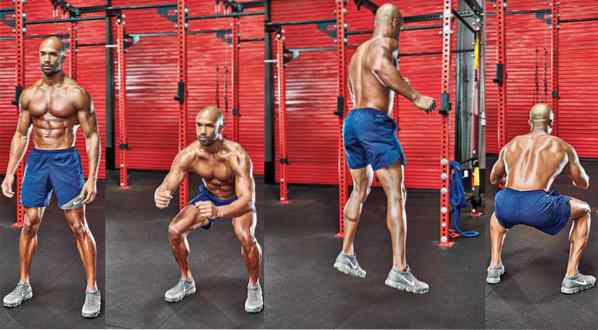
Per Bernal
180-Degree Jump Squat
DEFINING DIFFERENCE:
Jump squats offer a level of power development you won't get from staying grounded, even with heavy barbell squats. With the 180-degree turn in midair added to the mix, you get not only the benefits of enhanced coordination and athleticism over standard jump squats but also slightly more involvement of the adductors and abductors (inner and outer thighs).
EXECUTION:
Stand with a shoulder-width stance and squat down until your legs are parallel to the floor. Now drive up explosively, get airborne, and turn 180 degrees, landing back in a squat position.
WHEN TO DO IT:
Explosive jumps should always be done early in your workout, before heavy strength work, when your legs are still fresh.



Personne n'a encore commenté ce post.